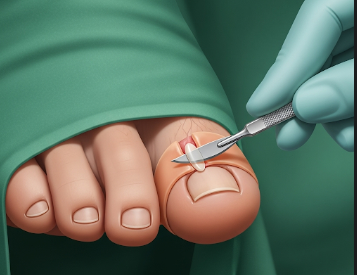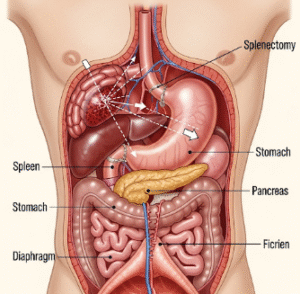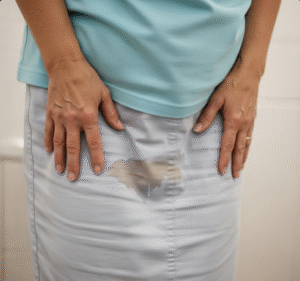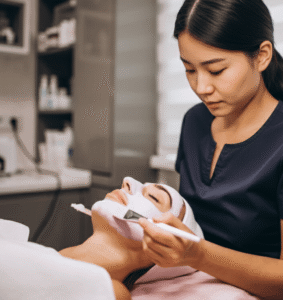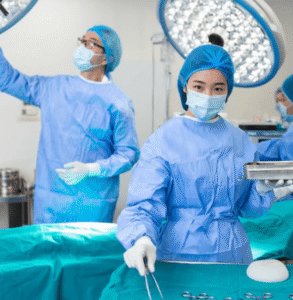Overview
Ingrown toenail surgery is a minor surgical procedure designed to treat painful or recurrent ingrown toenails. It involves removing the part of the nail that is growing into the surrounding skin and sometimes treating the nail matrix to prevent recurrence.
South Korea is recognized for advanced podiatry and nail surgery techniques, offering patients safe, effective, and minimally invasive procedures with fast recovery and excellent cosmetic outcomes.
What is Ingrown Toenail Surgery?
An ingrown toenail occurs when the edge of the nail grows into the surrounding skin, causing:
- Pain, swelling, and redness
- Infection in severe cases
- Difficulty walking or wearing shoes comfortably
Surgical treatment involves:
- Partial or total removal of the ingrown nail
- Chemical or surgical ablation of the nail matrix (to prevent regrowth of problematic edges)
- Correction of surrounding tissue to reduce recurrence
Indications include:
- Severe or recurrent ingrown toenails
- Infection unresponsive to conservative measures
- Pain affecting daily activities
- Failed conservative management (soaking, antibiotics, nail splints)
What are the Benefits?
- Relief from pain and infection → Immediate improvement in discomfort
- Prevents recurrence → Matrix ablation stops repeated ingrowth
- Minimally invasive → Small procedure, often outpatient
- Quick recovery → Most patients resume normal activities within days
- Improved foot health and hygiene → Reduces risk of complications in diabetics or elderly
- Expert surgical care in Korea → High success rates, minimal scarring
Procedure Details
1) How should I prepare for Ingrown Toenail Surgery?
- Preoperative evaluation → Examine toe, assess infection, review medical history
- Medication review → Blood thinners may need temporary adjustment
- Fasting → Usually not required for local anesthesia
- Pre-procedure consultation → Discuss procedure type, matrix ablation, and post-surgery care
- Lifestyle preparation → Keep foot clean, avoid wearing tight shoes, and manage any underlying health conditions
2) What happens during the surgery?
- Anesthesia → Local anesthesia to numb the toe
- Patient positioning → Seated or lying with the foot elevated
- Surgical steps →
- Toe cleaned and disinfected
- Partial or total nail removal depending on severity
- Matrix ablation using chemical (phenol) or surgical method
- Surrounding tissue may be trimmed or reshaped
- Dressing applied to protect surgical site
- Duration → 15–45 minutes depending on complexity
- Monitoring → Patient monitored for comfort and anesthetic response
3) What happens after the surgery?
- Immediate post-operative care → Toe may be sore; keep elevated and bandaged
- Pain management → Mild analgesics usually sufficient
- Activity restrictions → Avoid tight shoes and strenuous activity for 1–2 weeks
- Wound care → Keep dressing clean, change regularly, follow podiatrist instructions
- Follow-up visits → Check healing, remove sutures if used, ensure no infection
- Shoes and mobility → Wear open or comfortable shoes until fully healed
Risks / Benefits
Risks
- ➤ Infection at surgical site
- ➤ Pain, swelling, or bleeding
- ➤ Nail deformity or abnormal regrowth
- ➤ Recurrence (rare if matrix ablation done properly)
- ➤ Allergic reaction to local anesthesia or chemicals
Benefits
- ➤ Immediate relief from pain and infection
- ➤ Prevents future ingrown toenails
- ➤ Minimally invasive with quick recovery
- ➤ High success rate under expert care in Korea
- ➤ Improved foot function and comfort
Recovery and Outlook
- Immediate recovery → Toe may be sore; keep elevated and avoid pressure
- Short-term follow-up → Usually within 1–2 weeks to check healing
- Return to normal activity → Light walking within a few days; full activity within 2–3 weeks
- Long-term outlook → Permanent relief if matrix ablation performed
- Post-procedure care → Regular cleaning, wearing appropriate shoes, monitoring for infection
- Complication prevention → Especially important in diabetics or patients with poor circulation
South Korea provides comprehensive post-surgical care, patient education, and follow-up to ensure optimal healing and long-term prevention of ingrown toenails.
When To Call the Doctor
Contact your podiatrist immediately if you notice:
- ⚠️ Persistent or worsening pain
- ⚠️ Redness, swelling, or discharge indicating infection
- ⚠️ Excessive bleeding or bruising
- ⚠️ Signs of delayed healing or abnormal nail regrowth
- ⚠️ Fever or systemic symptoms
Best Korea Option / Process
South Korea is a leading destination for ingrown toenail surgery due to:
- Expert podiatrists and foot surgeons
- Minimally invasive, precise techniques
- High success rates with minimal recurrence
- Comprehensive post-operative care
- International patient services → Consultation, translation, and scheduling support
Top Clinics for Ingrown Toenail Surgery in Korea:
- Asan Medical Center, Seoul – Advanced foot surgery and nail care
- Samsung Medical Center – Expertise in minor surgical procedures and post-op care
- Seoul National University Hospital (SNUH) – Comprehensive podiatry and foot health management
- Yonsei Severance Hospital – Multidisciplinary foot care and surgical support
👉 For patients suffering from painful or recurrent ingrown toenails, surgical treatment in Korea offers a safe, minimally invasive, and highly effective solution with expert follow-up care.

